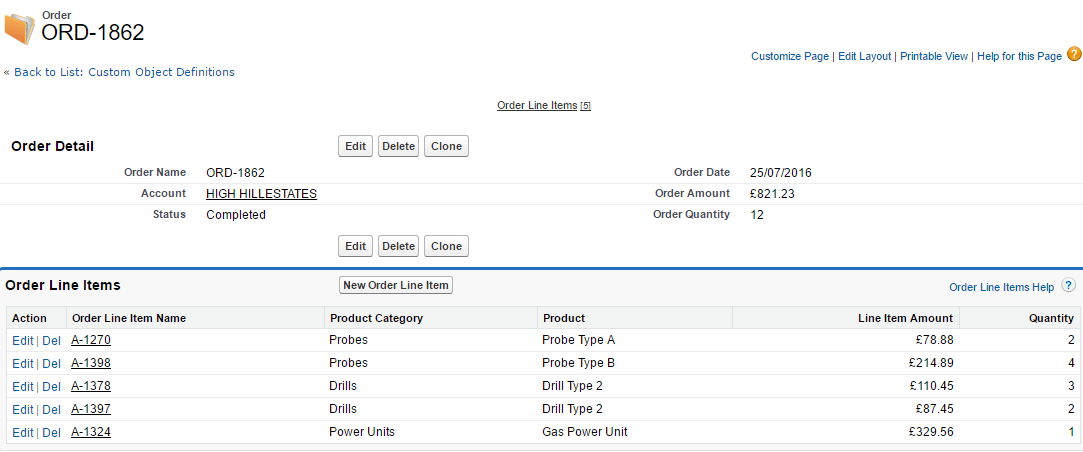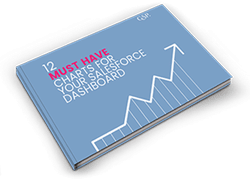Import Orders Into Salesforce To Optimize Account Revenue
Winning the deal is just the beginning - importing your orders into Salesforce is how you lock in revenue and drive account growth.
Last updated September 19, 2025
You’ve shaken hands on the deal with your new customer. And the paperwork is signed.
But nothing gets delivered. No services are provided. And no money changes hands.
At least not yet.
That’s because the customer now begins placing regular orders for your products, often using the portal of an ERP system.
After all, winning the Opportunity was only the start of the revenue building relationship. Potentially you have created a framework agreement with the customer to cover the terms and commercial arrangements with all future orders.
Either way, now the account management hard work begins. It’s the effectiveness of that hard work that will determine the volume and value of the regular orders that the customer will place.
And guess what? The impact of account management can be significantly increased if the orders that each customer places are imported into salesforce on a regular basis. And that means optimized revenue.
Examples of customers that import orders into salesforce
Here are three examples of GSP customers that import orders into salesforce.
- Medical goods supplier that delivers to hospitals, doctors and other health care practitioners. The customers regularly order new supplies of drugs and consumables that are used in patient care.
- Printer manufacturer that makes the capital equipment printers plus the ongoing ink and other consumables used by that used daily.
- Footwear manufacturer that delivers to high street retailers based monthly and weekly orders.
Each of these businesses import orders from their customers into salesforce. Here’s why.
Lack of visibility of order information
Here’s the issue that account managers in all of those companies faced.
It’s extremely difficult to get visibility of customer orders. After all, ERP systems or other ‘back-office’ systems can be difficult to access or interrogate for sales users.
That means it is difficult for order data to be used to drive key account management, business development and marketing initiatives. It also means that these activities are not truly aligned with the up-to-date customer situation and can lead to sub-optimizing revenue potential.
That’s especially true if you’re standing on the pavement outside a customer’s office about to walk through the door. You want up to date information on order history. But that can be difficult to obtain from an ERP system.
Import orders into salesforce
The solution is to import orders into salesforce.
That way, the order information is visible on each individual Account.
Import orders into salesforce to use inline charts can show the trend in revenue for each Account.
It also means that reports and dashboards can display the information for all Accounts in a territory or region.
If Order Line Item data is imported into salesforce as well then additional information is available about the specific products purchased by the customer.
Benefits of importing orders into salesforce
We spoke to three of our customers that import orders into salesforce. Here’s what they told us about the benefits.
- Spot trends in order volume at individual customer level. A reduction in orders may indicate competitor activity. An increase in orders may indicate business growth and further potential areas of revenue expansion. Either way, now the account manager has information essential for key account planning.
- Control discounts by comparing orders with previously agreed volumes. Very often sales discounts are agreed based on the volume of future orders the customer anticipates. Bringing these orders into salesforce makes it easy to compare what was agreed and anticipated with what has actually happened. It doesn’t necessarily mean you need to go back and re-negotiate the deal. But having easy access to this information certainly put you in a much stronger negotiating position next time around.
- Identify opportunities to increase order value by analyzing what individual customers are buying. If the customer is only buying one type of product there may be an opportunity to extend the range of sales.
- Segment customers based on actual and order volumes. Team managers and account managers can use this information to drive business development, account management and marketing initiatives.
- Drive account manager targets and rewards based on a comparison of order volumes against target. Two of our customers automatically link the orders imported into salesforce directly to target records at the account and team level. This directly motivates account managers to perform well.
- Make it easy for account managers to prepare for meetings. This includes the ability to view order volumes on mobile devices so that reps can quickly prepare for meetings out in the field.
- Compare month-on-month or year-on-year order volumes easily. Aggregate this information across reps and territories. Spot business development opportunities by identifying accounts that have increased or decreased order volumes during these periods.
- Manage framework agreements. With these contracts there is often an expectation of the volume or value of orders that will be placed by the customer over time. Often discounts will have been agreed based on the expectation of this volume. Importing orders into salesforce means you can easily compare expected with actual – and negotiate accordingly!
How to import orders into salesforce
Importing orders into salesforce isn’t as hard as you might think. There’s two ways you can do it.
- Integrate salesforce and the ERP / order management system. This has the benefit of making the order import process automatic. It also means salesforce has the most up to date order information. On the other hand, it means writing an integration between the ERP system and salesforce.
- Use the Data Loader. One man’s integration is another’s import wizard. Many have our customers that have integrated their ERP system with salesforce actually started with a much more manual solution. Simply export the data from the ERP system on a regular basis and use the Data Loader to import the order information from a spreadsheet.
Actually here’s the tough bit with either approach. At the start, someone has to go through the Accounts in salesforce and the corresponding records in the ERP / order processing system. Match up the Accounts and store the unique ID from the ERP system against the corresponding salesforce record. Do that leg work and you’re more than half way there.
Getting started with importing orders into salesforce
Importing orders into salesforce makes essential data accessible and visible to sales, account management and marketing teams. That means the data can be used to align business development activities on a customer-by-customer basis. And that, in turn, means increased revenue.
Getting order data into salesforce isn’t as hard as it seems. It doesn’t necessarily require full integration. Major benefits can be achieved by using import wizards to import the data on a regular basis. After all, that’s how many of our customers got started with importing orders into salesforce.







